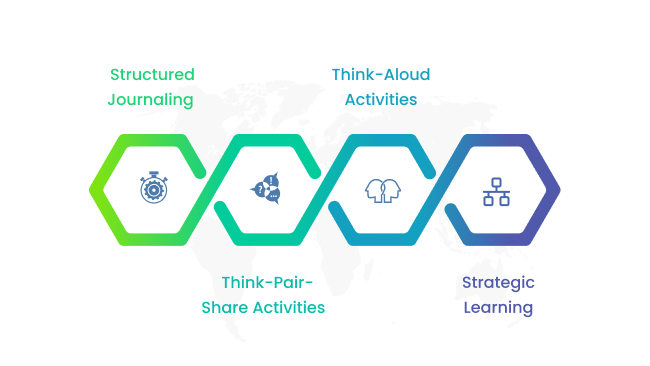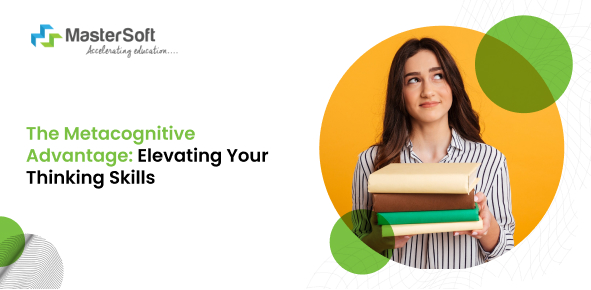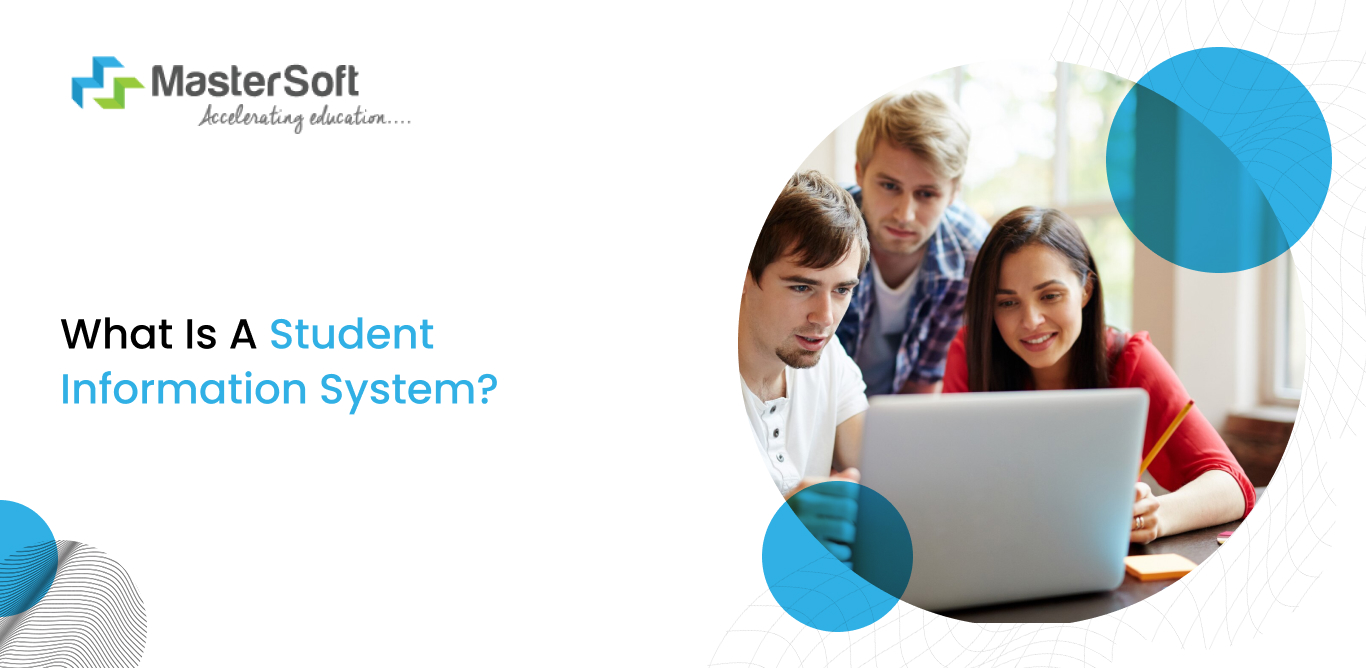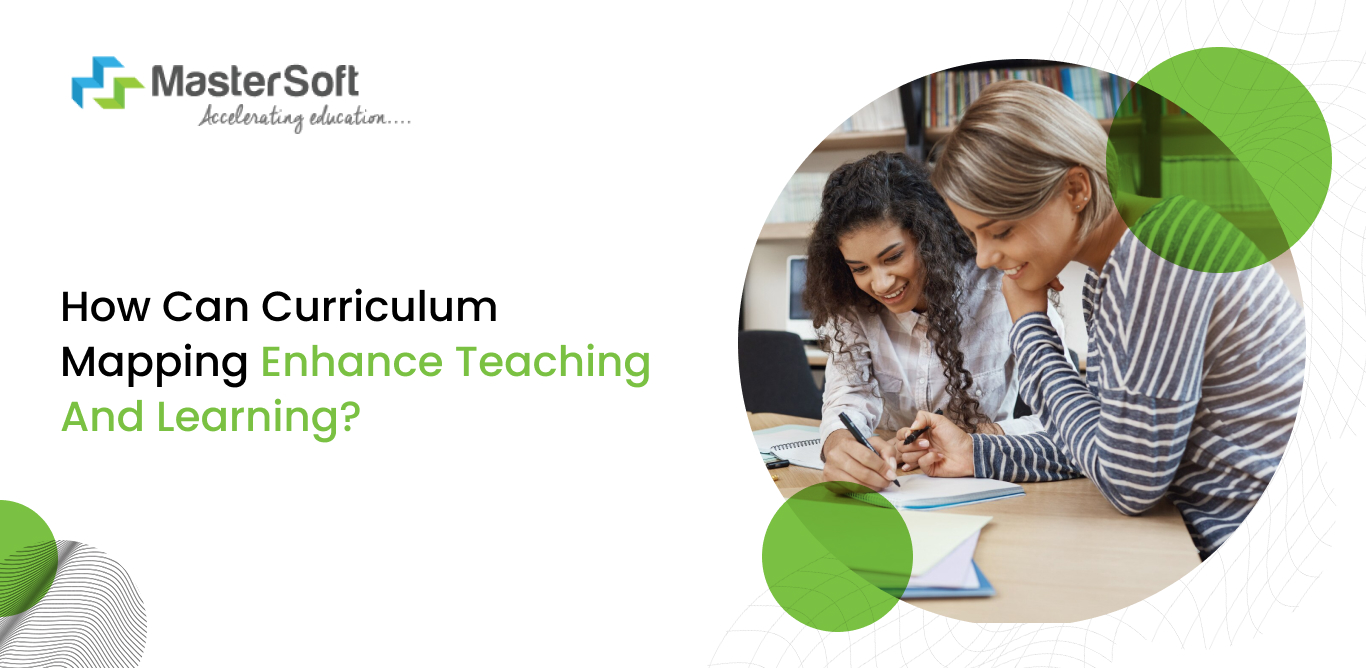13, May 2024
The ability to differentiate between right and wrong is an essential lesson that teachers and parents teach in a child’s initial years. As they grow up, traditional education takes precedence, while students thinking processes progress.
In the higher educational stage, their analytical abilities develop, helping them to sharpen their critical thinking skills. In fact, the metacognitive advantage of employing thought-provoking teaching and learning practices is essential. Why? As it sets the stage for lifelong learning and creates self-awareness.
But what does metacognition have to do with learning, and how does it impact a student’s overall personality and aptitude? Let us take a look.
What is Metacognition?
Metacognition has a popular definition:’’ It is thinking about thinking’’. Although the statement is true, it provides a vague meaning to the concept. Hence, a better definition: metacognition relates to students analysing their learning and identifying what they have understood and their weak areas.
For instance, a student who possesses metacognition knowledge is an active listener and self-evaluates their understanding continuously. They ask questions and engage in discussions with peers and teachers to get a better grasp of concepts.
In contrast, passive learners confine themselves to the teachers’ instruction despite insufficient knowledge and a lack of self-awareness. So does that mean they are inattentive and do not give sufficient effort?
It is crucial to note that the issue is not about effort; instead, it is about the student's inability to determine why they struggle. Also, they are unable to figure out how to resolve their major academic crisis.
Core Components of Metacognition
Development psychologist Dr. John Flavell introduced the term ‘’metacognition’’ in 1976, which consists of two components.
Metacognition Knowledge
Self-understanding and knowledge about learning and themselves as students are central to metacognitive knowledge. For instance, think about how a student will approach a science experiment. In fact, students with good metacognitive knowledge will consider the following:
- Their ability and knowledge to conduct the specific science experiment.
- Their comprehension of the given task or assignment.
- Their existing knowledge regarding suitable strategies can help them conduct the experiment.
What Is Adaptive Learning? Benefits And Challenges Of Adaptive Learning
Metacognition Regulation
Students’ initiative to apply one’s knowledge into action is a key part of metacognition regulation, allowing students to self-evaluate their tasks. Furthermore, they can implement appropriate tactics to solve the issue, which is a major metacognitive advantage.
For example, the student can use a different method if the experiment fails to provide a successful outcome. Besides, tactical changes are necessary for maintaining metacognitive regulation.
How can Metacognition Elevate Students’ Thinking Skills?

Infusing metacognition into the instructional approaches enables students to learn self-control and self-assessment. Furthermore, they begin to take ownership of their learning, urging them to evaluate their learning and confront their individual issues.
More importantly, learners identify their strengths and weaknesses and develop strategies as per the different challenges. In fact, they develop self-awareness, problem-solving techniques, and study habits, enhancing their overall thinking skills.
1. Structured Journaling
A conventional educational approach necessitates that students follow the teacher’s instructions, do homework, and study for tests. Students rarely get the chance to reflect on what they have learned in the past week.
The rush to complete the chapter to keep in line with syllabus coverage prevents many students from expressing their difficulties. Therefore, teachers can encourage students to maintain a journal to record their thoughts about the class activities.
However, the journal should have a structure that outlines what they have learned while addressing the following aspects:
- The most interesting thing that I learned this week
- The most difficult concepts I learned in a class
- Do these concepts have any relevance to the real world?
- Main areas of a lesson that I have a problem understanding.
- Have I made any progress?
Students can dedicate 10 to 15 minutes daily or on the weekends to reflect on their learning, actions, thoughts, etc.
2. Think-Pair-Share Activities
What if students take the initiative to explain a lesson or a concept to one of their peers? Teachers can implement think-pair-share activities, wherein teachers can pair up students and conduct interactive exercises.
Teachers assign a topic or a question that each pair of students researches, thinks about, and forms individual opinions about. Students discuss the topic by explaining their thought processes to each other.
Consequently, the pair expresses their thoughts in front of the classroom, and towards the end, they engage in further discussion and questions. So, in the process of explaining concepts to peers, students gain a better understanding.
That is how the Feynman technique works: by explaining complex topics to someone as if they have little or no idea about them. In effect, it provides a thorough comprehension of the subject material, retains information longer, and identifies gaps in knowledge.
3. Think-Aloud Activities
The thoughts that come to our minds before, during, and after doing a task are noteworthy as they might impact the outcome. That is why a think-aloud activity is an effective mechanism that enables one to monitor one’s thought processes.
For instance, teachers can emphasise the habit of making notes, re-reading parts of texts that need further understanding, etc. Moreover, they can implement the following steps:
- Students should verify their knowledge and comprehension of terms while reading a chapter. Also, they can review the main gist of the story or concept.
- They can maintain learning journals, helping them reflect on their learning so far. Furthermore, it includes goals, self-assessments, and questions.
- Incorporate conditional, adaptive learning strategies, which help them determine if they can complete a task within a stipulated time.
Metacognition - Strategies, Skills And Metacognitive Knowledge
4. Strategic Learning
Metacognitive learning shifts from the conventional reading and learning process, which usually leads to rote memorisation. In fact, it promotes a strategic learning framework, which includes three core components:
- Planning: Students must think critically about the specific objective before starting an assignment, project, or reading. The next step includes choosing an appropriate approach.
- Monitoring: In the second stage, students must track their progress in the context of the learning objective and change tactics accordingly.
- Evaluation: When students complete the task, they must compare the outcomes against the learning objectives. Besides, the results will determine the usefulness of the strategies to manage similar activities in the future.
Advantages of Metacognition

1. Strategic Problem-Solving
Incorporating metacognition into classroom activities allows students to identify problems and develop adequate strategies to solve them. In effect, they develop a mental framework that helps them assess situations and issues effectively.
Also, when they get clarity in terms of how to approach a certain problem, they improve their tactics to handle issues. As a result, they succeed in figuring out efficient and inefficient strategies.
2. Improved critical thinking
One of the significant benefits of metacognition is that it improves their critical thinking, helping students assess their strengths and weaknesses. Consequently, they work on bettering themselves and strive to overcome their weaknesses.
Furthermore, they become efficient decision-makers and analyse problems effectively without giving in to cognitive biases.
3. Communication Skills
When students develop metacognition and self-awareness, they can express their perspectives and opinions clearly and without hesitation. More importantly, they can explain topics or complex ideas in an articulate manner.
Besides, high-quality communication skills help them to understand others’ points of view and facilitate productive collaborations.
4. Growth Mindset
Gaining insight into one’s learning styles and thought patterns exposes the fallacies and errors in contrast to the effective ones. Therefore, they take the initiative to gather new information and update themselves accordingly.
5. Self-Motivation
Metacognition increases self-awareness, directing students to assess their learning habits and adopt new strategies. They evaluate their progress and reflect on prior knowledge and skills, and their self-motivation drives them to persevere.
Wrapping it Up,
Metacognition in teaching and learning leads to self-awareness, urging students to reflect on their learning and thinking. Metacognitive strategies instil core skills, including communication, problem-solving, mental resilience, decision-making, etc.
Additionally, learners discover tactics, methods, and pathways to accomplish learning goals and navigate real-life situations.
Want to enhance students’ thinking abilities but don’t know where to start? Learn More
Mobile: 08448010216
Email:info@mastersofterp.com













